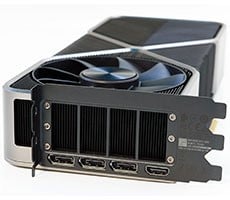AMD Fusion: A8-3500M A-Series Llano APU Review
Introduction and Specifications
AMD launched the first volley of their Fusion technology salvo late last year and since then thin-and-light notebook offerings from various major OEMs have come to market. AMD's Brazos platform and specifically the Zacate E-350 processor were obvious successes and the company was able to pull down many strong design wins with manufacturers like Lenovo and HP leading the charge, marketing the product's intrinsic benefits. AMD's E series Fusion processors offer Atom-like power consumption with more robust CPU and GPU performance, at netbook-like prices. To say the product was a success would be a total understatement. In fact, the company claims to have "sold out" of low cost Fusion processors and shipped over 5 million units. No matter how you do the math, it's huge.
Today, AMD is lifting the veil on their next generation mainstream mobile processor, code named Llano. This latest volley by AMD is aimed at hitting Intel right in the mid-section, where the bulk of multimedia capable notebooks are sold. These are higher-end machines, where the likes of Intel's new Sandy Bridge-based Core i5 and Core i7 dual and quad-core processors live.

AMD's New Fusion Line-up - A-Series Processors Address the Midrange and High-End
The platform we'll give you a look at today is AMD's A Series; specifically we have an A8 APU-based machine that we'll break down for your edification and spin up on the test bench so you can see its performance profile. Let's get a look at some specifics of the A8 Llano APU or "Application Processing Unit," as AMD calls it, along with its accompanying FCH or Fusion Controller Hub.
AMD Llano A-Series A-3500M APU Pin Layout
|
| Processors Package | 32nm / FS1 722-pin lidless micro PGA, 35x35 mm, 1.2192 mm pitch |
| TDP Configs | 35W and 45W configurations |
| Processor Core | “Stars” 32nm HKMG process core (up to 4 cores), 128 KB L1 Cache(64 KB Instruction, 64 KB Data) 1 MB L2/Core, 128-bit FPUs |
| Memory | Up to DDR3 1600 @ 1.5V, DDR3L 1333 @ 1.35V |
| Graphics Core | Up to 400 Radeon Cores, DirectX 11 capable, UVD3 |
| Displays | Digital Display I/F DP0: Display Port, HDMI, DVI Digital Display I/F DP1 Display Port, HDMI, DVI -LVDS and VGA from Travis translator |
| Power Management | • Multiple low-power states • 32-nm process for decreased power consumption • AMD AllDay power • System Management Mode (SMM) • ACPI-compliant, including support for processor performancestates (P-states), processor power states (C-states), and sleep states including S0, S3, S4, and S5 • Per core power gating (CC6) • PCIe core power gating • PCIe speed power policy • GPU power gating of Radeon Cores and video decode (UVD3) • AMD Turbo Core technology |
| AMD A60M / AMD A70M Fusion Controller Hub - FCH |
Integrated DAC supporting VGA |
| Tech / Package | 65nm / FC BGA, 605-Ball, 23x23mm, .8mm pitch |
| TDP Configs | 2.7W to 4.7W for typical configurations |
| UMI | x4 Gen 1 + DP |
| SATA | 6 Ports, 6 Gbps |
| RAID Modes |
0,1 |
| USB Ports |
A70M: 4 USB 3.0 Ports, 10 USB 2.0 Ports, 2 USB 1.1 Internal Ports A60M: 14 USB 2.0 Ports, 2 USB 1.1 Internal Ports |
| PCIe General Purpose |
4x1 Gen2 |
| HWM | Incorporates Fan Control, Voltage Level Sensing |
| Clock Gen | Integrated |
| Power Rails | SVID for VDDCR_CPU & VDDR_NB, fixed voltage for other rails |
| Software | Drivers: Windows 7, Windows Vista, Linux |
| Firmware | SBIOS, VBIOS, Diagnostics, Utilities |
If you look closely at the spec list above (and didn't allow your eyes to glaze over), you'll note that the A-Series platform has virtually all the latest technologies built in. There is support for HDMI, DisplayPort, PCI Express Gen 1 and 2, 6Gbps SATA and native USB 3.0. In terms of all of the major notebook check-box items, AMD's A-Series has it all.
On the APU side of things, AMD A8-3500M mobile processor we'll be looking at in the pages ahead also has 400 Radeon cores on board (think roughly a Radeon HD 6500M series mobile GPU, but now coined the Radeon HD 6620G) along with four full AMD "Stars" or Phenom-class cores on board, all "fused" into a single 32nm die and a 722 pin microPGA package. We have the higher-end 35 Watt variant in house for this piece. It has a stock speed of 2.4GHz with power gating down to 1.5GHz. But let's not get too far ahead of ourselves. First, let's drop down to a lower level of detail on the A-Series Fusion architecture.






